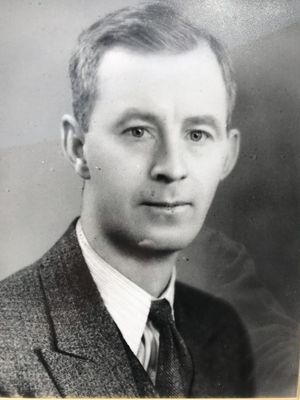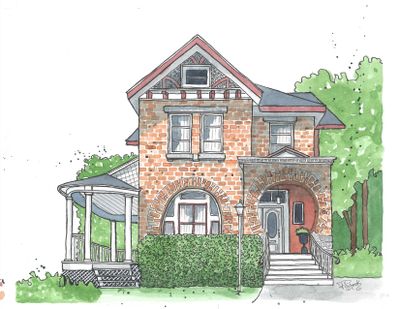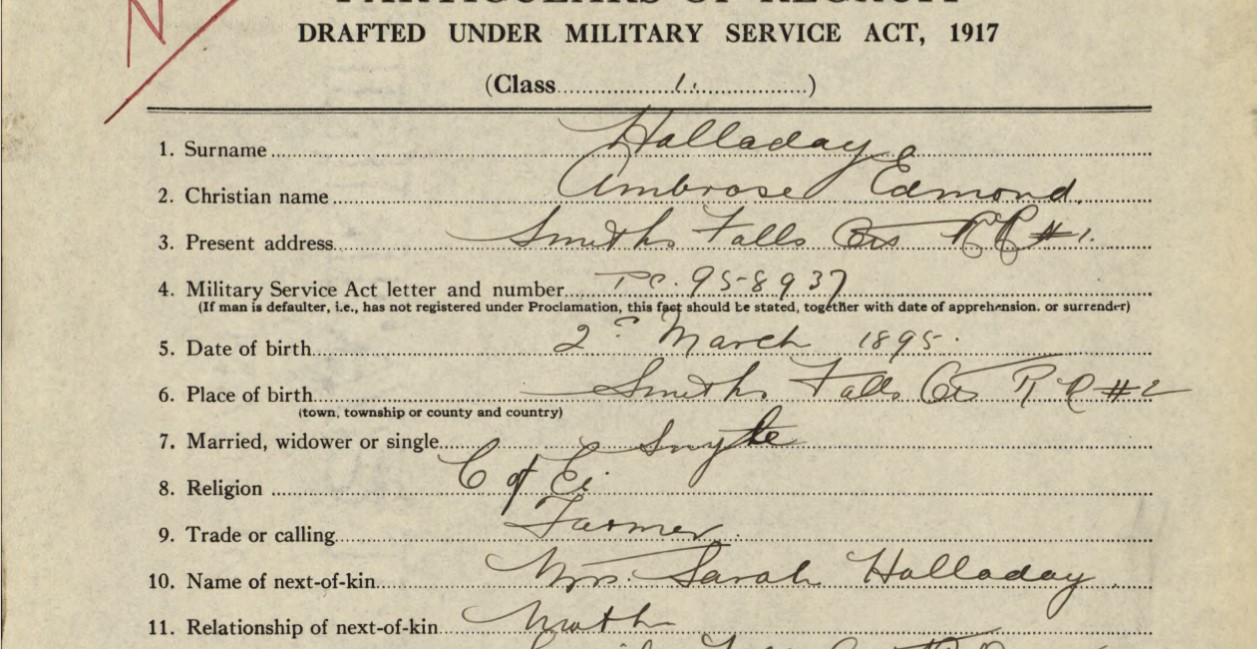
Ambrose Halladay: Farmer, grocer, soldier, reeve
Ambrose Halladay: Farmer, grocer, soldier, reeve - part I
Panels
Ambrose Halladay: Farmer, grocer, soldier, reeve - part IAmbrose Halladay: Farmer, grocer, soldier, reeve - part II
Ambrose Halladay Details

Keyhole House, Smiths Falls by Peggy Schenk Details
Ambrose Halladay moved into the Keyhole House in Smiths Falls with his wife and three children in 1945. His son, Ace, remembers eating a freshly baked bun while sitting on the porch that same year. “A light rain was falling, the aroma of freshly baked bread wafted through the house, and I felt like I was on top of the world,” Ace mused, then added “my mother was a great cook.” Ace shared more fond memories from his life as a nine-year-old at the Keyhole House including the spectacular staircase in the front hall and neighbors Geraldine and Levi Clark. They lived next door at 180 Brockville Street and were friends of the family. Levi had moved to Smiths Falls from Ottawa in 1921 to assist his brother Harry, who was the owner of Clark’s Dairy. The business was located at the corner of River and Elm Streets and supplied milk to over eight hundred families. The butter plant was so successful that surplus butter was shipped to Montreal. A voters list tells us that in 1945 Ace was living at 182 Brockville Street with his parents, Gertrude and Ambrose Halladay, his siblings, and his grandmother, Margaret Ann (Gillen) Jones. Mrs. J. T. Hall and her daughter had recently arrived from Toronto and were rooming in the front bedroom on the second floor. The house was rented from William Lorimer, a retired grocer in Brockville.

Ambrose Halladay, Personnel Record
Details
Ambrose Edmund Halladay (1895-1976) was born to Edmund Ambrose and Sarah Jane (Swayne) Halladay on March 2, 1895, in Smiths Falls. He was the younger brother of Beatrice Margaret (Halladay) Graham (1894-1972) and the elder brother of Hiram (1905-1981). When he was conscripted into the Second Depot Battalion, Eastern Ontario Regiment of the Canadian Armed Forces in 1918, he was a lean, twenty-three-year-old, brown-haired, blue-eyed farmer. Many farmers did not agree with being forced to enroll into WWI and sought agricultural exemptions. The Borden government was anxious for farmers’ votes and agreed to some exemptions. Following the election, they broke their promise. New federal and provincial political parties were born as a result. Ambrose’s attestation paper is dated June 1918, however his medical was not until January 1919 when he was demobilized.
